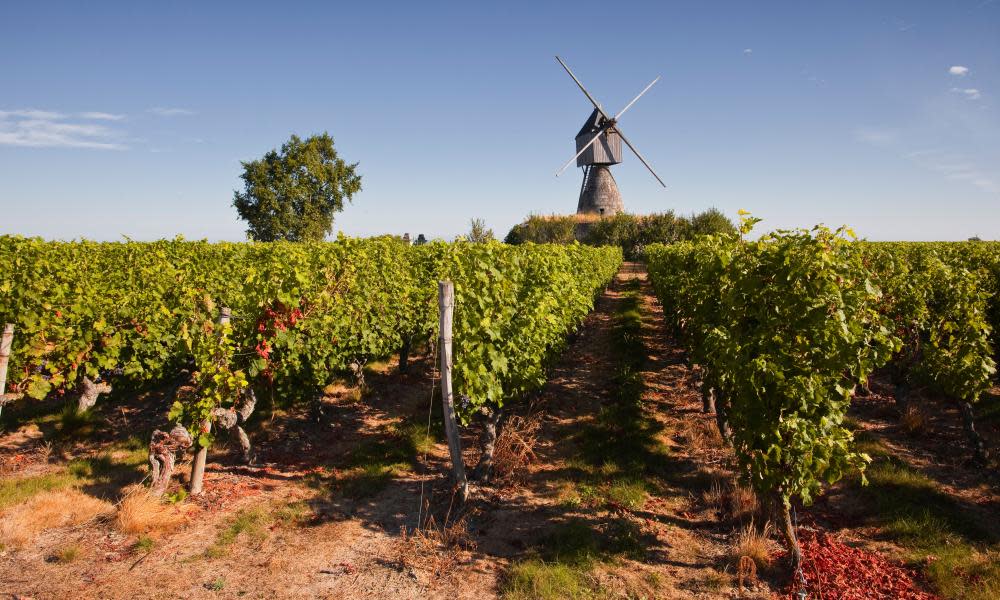Is this the red wine you didn’t know you were missing?

When did you last buy a bottle of cabernet franc? Were you even aware it was a variety in its own right (after all, it is easily confused with its offspring, cabernet sauvignon, with which it is often partnered)? Fans of Loire reds, of course, will be more than familiar with it – it’s the main grape in appellations such as saumur, saumur-champigny, chinon and bourgeuil, and plays an important supporting role in bordeaux. You also find it in South Africa, Argentina and Chile, where it is rare enough to be featured in Marks & Spencer’s new “Found” range, which I mentioned the other week.
Curiously for such an unheralded wine, cabernet franc can be expensive, particularly in Bordeaux and Tuscany. “Oh, that’s gorgeous!” I thought to myself after tasting the ’L Franc Proprieta Sperino 2013 at a recent Lay & Wheeler tasting, only to follow that with a gulp after learning it was £98 a bottle. Still, that’s not quite as bad as the £428 it would cost to buy a bottle of Cheval Blanc 2012 in which cab franc makes up almost half the blend. (If you had the readies, it would be almost worth investing in a case and hanging on to it until nearer the final recommended drink date of 2045, but wine investment is a mug’s game unless you know exactly what you’re doing.)
Obviously, most cabernet franc is a good deal cheaper than that, though it’s hard to find many examples for less than a tenner. And that will never happen unless the supermarkets embrace the grape, and there’s little sign of that. Wine buyer Robbie Toothill of Lay & Wheeler suggests this is due to the herby quality, or “greenness”, of Loire cabernet francs, which is precisely what appeals to cabfrancophiles such as myself. This gives them a freshness and fragrance that makes them perfect for summer drinking, particularly when they are – as they should be – lightly chilled. The continued lack of popularity may also be due to the fact there’s not much of a buzz around cabernet sauvignon at the moment, either, and, as I mentioned earlier, people often conflate the two cabernets.
Maybe climate change will do the job. Toothill observes that Loire reds, particularly those from the recent 2018 vintage, are getting riper and less green (try Lay & Wheeler’s generously juicy Chinon Pierre de Tuf 2018 from Jerôme Billard’s Domaine de la Noblaie (13%), which you can get hold of for a rather more affordable £11.50 en primeur.) And it’s being increasingly used in Bordeaux to offset high alcohol and combat the effects of global warming. Hopefully, cabernet franc’s moment will come.
Four bottles to make you fall for cabernet franc
Saumur Rouge 2018 £11.50 Yapp, 14%. The warm 2018 vintage has brought out riper fruit than is usual in the Loire – almost pure cherry, so lovely with duck.
Château de Plaisance Sur La Butte 2019 £19.50 Lea & Sandeman(or £17.50 a bottle if you buy a case of 12), 13%. Blended with its fellow cab, cabernet sauvignon, this vivid, biodynamic red is just that bit more blackcurranty than straight cab franc, but still has that delicious, herby edge. Lovely with lamb chops.
Château Lary Tagot Bordeaux 2018 £8.50 The Wine Society, 14%. A good example of what even just a smidge (15%) of cab franc can do for a bordeaux blend, adding both freshness and fragrance.
Artesano de Argento Organic Malbec Cabernet Franc 2018/19 £10 Sainsbury’s, 14.5%. Here, cab franc is blended with malbec in a bigger, bolder style that’s made for barbecues.
• For more by Fiona Beckett, go to matchingfoodandwine.com


